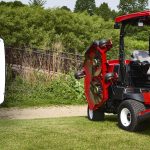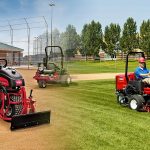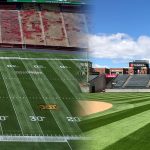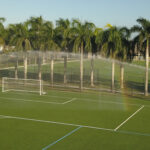By Josh Friell, PhD.
The Toro Co.
With spring rapidly approaching in the Northern Hemisphere, sports field managers are in the midst of preparing their fields for another exciting year of recreation and entertainment. Can you hear it? The players laugh and yell, the crowd roars, the referee blows his whistle, and your team scores just as the clock runs out to win the game.
As the teams leave the field, you are reminded that this is when your real work begins. That is, ensuring that the turf recovers in time to provide a quality playing surface for the next game. If you made the proper species and cultivar selections when seeding your venue, you’ve already got a leg up.
Turfgrass breeders are continually making progress on improving turfgrass quality and characteristics. But how do you know which species and cultivars to use for your unique application? Luckily, there is a wealth of information available to help you decide.
Things to Consider
When choosing a suitable cultivar, there are many things to keep in mind. The first is that cultivars do not perform equally in all geographic locations. Additionally, factors like traffic tolerance, spring greenup, disease resistance, drought tolerance and cold hardiness, among others, may play a role in your decision.
The first step is to identify which turf characteristics are most important given your location and management practices. Once you have a good idea of which factors are most important, it’s time to find cultivars that meet the needs you have identified.
Where to Go for Information
Two great resources for evaluating the performance of a wide range of cultivars under various stresses in different regions around the United States are the National Turfgrass Evaluation Program (www.ntep.org) and the Cooperative Turfgrass Breeders Tests (www.ctbt-us.info). Both programs test new commercial cultivars and experimental entries at many locations throughout the country and under a wide range of stresses, so be sure to examine results from a location close to you.
Each program evaluates turfgrass entries through a combination of visual ratings and quantitative measurements over several years. Results are compiled in easy-to-read tables with instructions on how to read and interpret the data so you can easily identify cultivars that best meet the needs of your facility.
A Few Examples
For example, let’s say that spring greenup is important at your facility due to spring sports and you’re interested in identifying a cultivar of Kentucky bluegrass to use. If you are in New Jersey, you might choose to use “Barvette HGT” Kentucky bluegrass because of the excellent ratings it received in recent NTEP trials at that location. On the other hand, if you are in Tennessee, there are other cultivars, like “Empire,” that performed statistically better at that location that you might choose. This is just one example of how a cultivar can perform differently in different locations. Close examination of the data and site-specific considerations are always important.
Once you know you’ve chosen the turfgrass cultivars that give you the greatest chance for success this year, you can rest easy. So, sit back, relax and enjoy the game!












